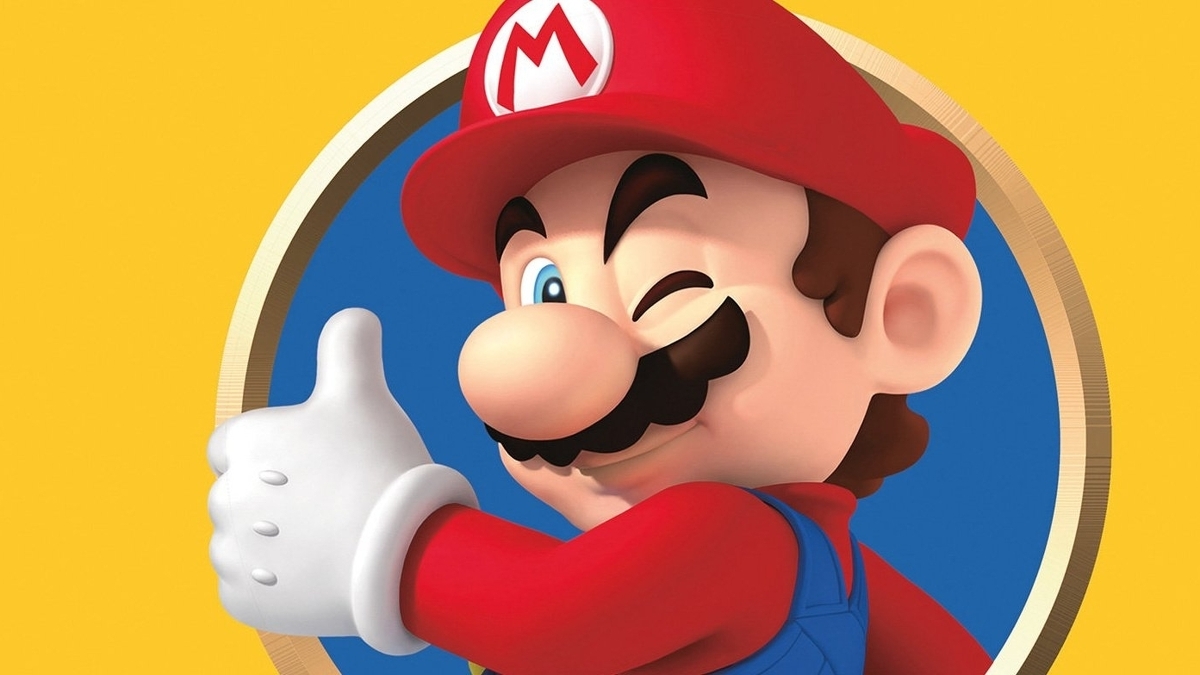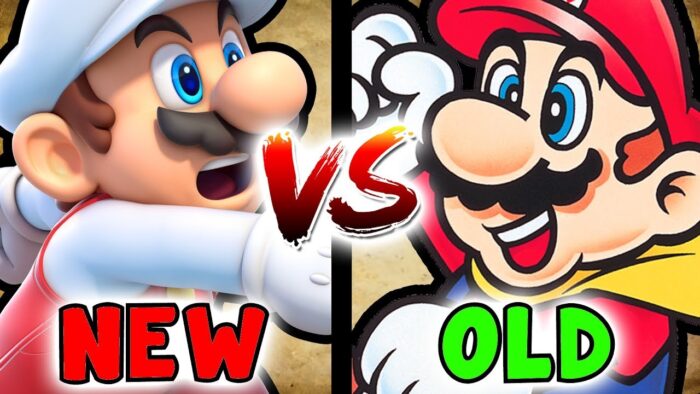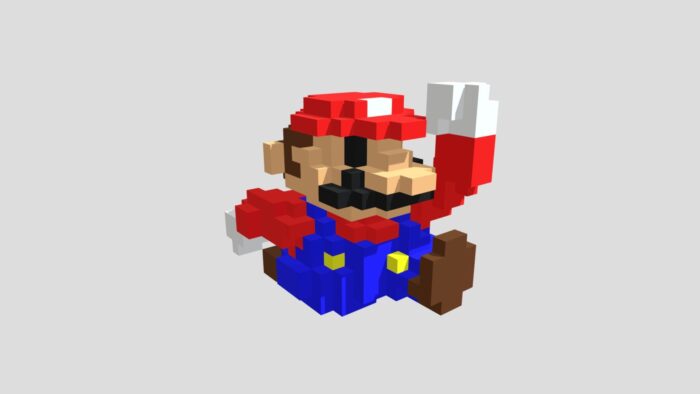
Even the simplest, at first glance, videogames can teach us serious things. For example, the legendary Super Mario, which many people probably played being a child, will help to understand graphic technologies.
With the game Super Mario online you can’t only spend good time, but also learn something about the technical aspects of creating, preserving and duplicating images. How is it possible that worldwide famous plumber teach us computer technology, math and pixels? The answer on this question you can find in this article, but firstly we need to make out with blocky old graphics.
High Resolution of Super Mario Brothers
The images on our monitors are put together with the help of small pieces of information, otherwise known as pixels. Thanks to them we can see pictures, movies and play videogames. These tiny elements were especially popular in the old days when people hadn’t known about PSP and Xbox yet. The pixels served as the material for creating digital masterpieces. You can also find other names for these parts – sprites or bitmap images. The word itself, bitmap, tells us that it is a certain order of the bits.
Classic Mario from the game Super Mario Brothers is always associated with those big pixels. However, they were like that for a certain reason. The resolution of Mario (256 x 224 pxl) was almost the maximum possible for the original Nintendo Entertainment System (256 x 240 pxl).
Of course, the picture quality on modern game consoles is much higher. This property is also called resolution. It refers to the total number of pixels that can be displayed. This puts on all digital images:
- Logos
- Game characters
- Graphics
- Motion
The more pixels in the file, the better quality you get. And it’s actual to any variant of digital thing: photo, video, game, GIF and so on.
Nintendo’s latest console model, Wii, which is available on 480p, can display only 640 x 480 pxl, which is beyond the capabilities of even the most powerful televisions. Thus, it becomes clear that Mario’s resolution is in many ways superior to his former version.
The Confrontation of Old and New

As time goes by, more attractive methods of transferring digital images have appeared and blocky graphics are gradually disappearing from the videogame arena. It was replaced by vector shapes, which are also known as polygons (the same ones from the geometry school course). In the case if you have forgotten what it means, polygons are any shape consisting of a certain number of points and line segments.
The texture of classic Mario is explained by a special way of creating the game, namely by bitmaps and sprites. The files underlying such graphics perform a certain color pattern on the grid, which we used to call blocks. The modern version of the character, made thanks to polygons, is three-dimensional. Due to this property, the new Mario is more mobile and limited only by the framework of the mathematical world. The powerful computers “drawn” it from polygons, exactly the same as those used to solve geometric tasks.
The mathematical world, in which the modern Mario exists, consists of polygons, points, line segments, or, in other words, primitives. They are a kind of analogue of pixels in a world where bitmaps reign. But the main difference between primitives and sprites is that they do not have low, high, or any resolution at all. Therefore, we can zoom in or out on Mario in the new version of the game without spoiling its quality. In any angle, he doesn’t break up into pixels. The polygonal character remains the same – clear and sharply defined.
Important Things about Image Rasterization and Donkey Kong
Mario Kart Games’ fans are sure to be known with Mario’s old enemy Donkey Kong. He appeared in the game Donkey Kong Country in the mid-90s. At that time the character conquered the fans with a similar theme with the already popular blocky plumber, and, of course, high-tech graphics. The polygons were a real breakthrough then, and to see a clear Donkey Kong, also in motion, was a technical miracle. But what’s really amazing is how the Super Nintendo system was able to show the game character in every detail. After all, the technical characteristics of the console were not capable of this. So how was this possible?
The answer is very simple. RARE, the company which created Donkey Kong Country, related and games with similar theme, has used a rasterization technique that turns polygons into a 2D pixelated images. The artful deception that the developers managed to pull off helped create a breakthrough and unusual for that time computer graphics.
What does it mean under the term “rasterization”? This is a process where a digital photograph composed of polygons is transferred to a grid and then converted into a pixel-based, two-dimensional graphic. We have already observed a similar method when we considered the concept of bitmap, it is not for nothing that these two words are considered interchangeable. Of course, «3D Adventure in the Kingdom of Kong» had no volume graphics. Pixel sprites looked quite natural and at that time could look like something close to three-dimensional graphic.
The Difference between 8-Bit Images and 8-Bit Processors

There is a claim that the poor graphics of that time are due to the limited capability of consoles. Many people still believe that the Nintendo Entertainment System had 8-bit graphics, while the Super Nintendo Entertainment System was twice as large. This delusion did not appear without reason The numbers only approximately reflect the real picture of things. The NES had 6-bit graphics and the SNES had 15-bit color, however, the graphics were 8-bit. Really confusing, isn’t it? So let’s try to figure it out.
First of all, we need to understand what the bit means and what function it has. A Bit is the smallest piece of information that a computer can process. For example, in an electronics store, we can see the inscription “N-bit processor”. The numbers in front of the bit indicate the amount that the computer processes in one cycle, that is, if “8-bit processor” is written, then it can process 8 bits in one cycle. Now it’s easier, so let’s get back to the consoles. The Nintendo Entertainment System just had an 8-bit processor, while the Super Nintendo Entertainment System had a more powerful computer (16 bits). Now the systems are able to process information 3 and even 4 times more than their technical predecessors.
But when it comes to images, things are different. An 8-bit image is a picture that has 28 available colors, or a total of 256 colors.A garden variety JPG will have only 24 bit and three channels for red, green, and blue with 28 colors in each channel. It means that the Nintendo Entertainment System had 26 colors and the Super Nintendo Entertainment System had 215, however, was able to display only 28 of them. The differences can be clearly seen by looking at the pictures of Super Mario 8-bit and 24-bit versions. The first variant rendered in 256 shades of grey, while the second had 224 colors at all. So now, if you hear someone talking about 8-bit graphics, you can confidently enter into a dialogue and demonstrate your knowledge gained thanks to the famous game character.








